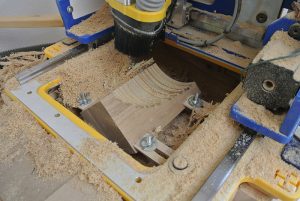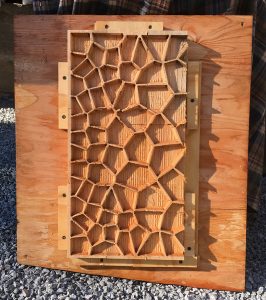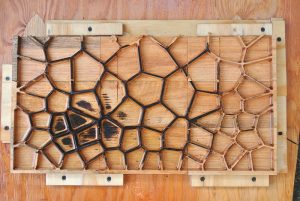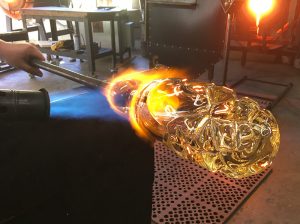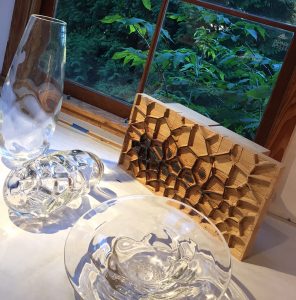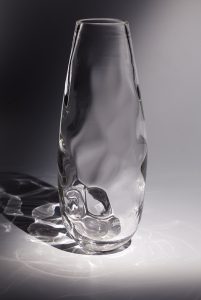Handibot at the Pilchuck Glass School
by Handibot Team • October 9, 2017 • Handibot User Stories, News
In August 2017, Brian Gillespie and Tara Broyhill were artists in residence at the Pilchuck Glass School. During session 6, “Exploration”, they explored how generative design and digital fabrication can inform the form and texture of glass in new ways. It was with this in mind that they packed a Handibot® Smart Power Tool into their car, drove a couple of hours north of Seattle, and went to “summer camp for grown-ups.” The portability, power, precision, and flexibility of the Handibot enabled them to make everything from four-part wooden molds to textured roll plates to finely textured graphite plates.
One of their first experiments was the creation of a four-part mold to impart horizontal grooves in glass:
Working with professional glass artists Jen Elek and Annette Blair, and assisted by Rose Battah, Gillespie and Broyhill led the creation of Iceberg, a vase standing 18″ high (video). The tooling—a wooden roll plate—was designed in Rhino and Grasshopper using a Voronoi diagram, and machined with the Handibot. The plate (11″x 22″) was larger than the working area of the Handibot, so the toolpaths were tiled and cut in smaller sections by moving the Handibot over the workpiece.
They also produced a set of drinking glasses with texture and color generated in Rhino and Grasshopper. A 90-degree V-bit carved the pattern onto a graphite plate using the Handibot.
